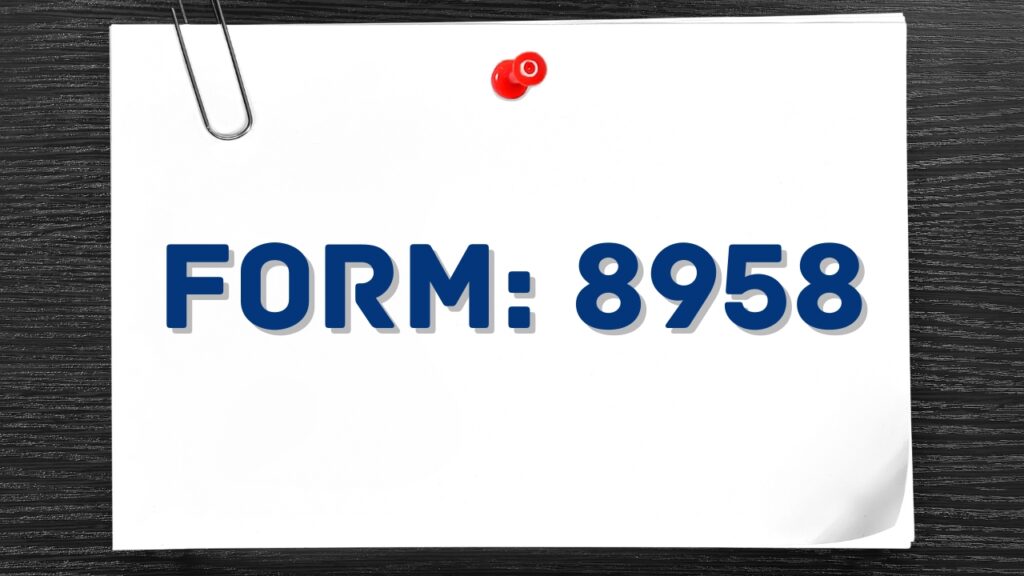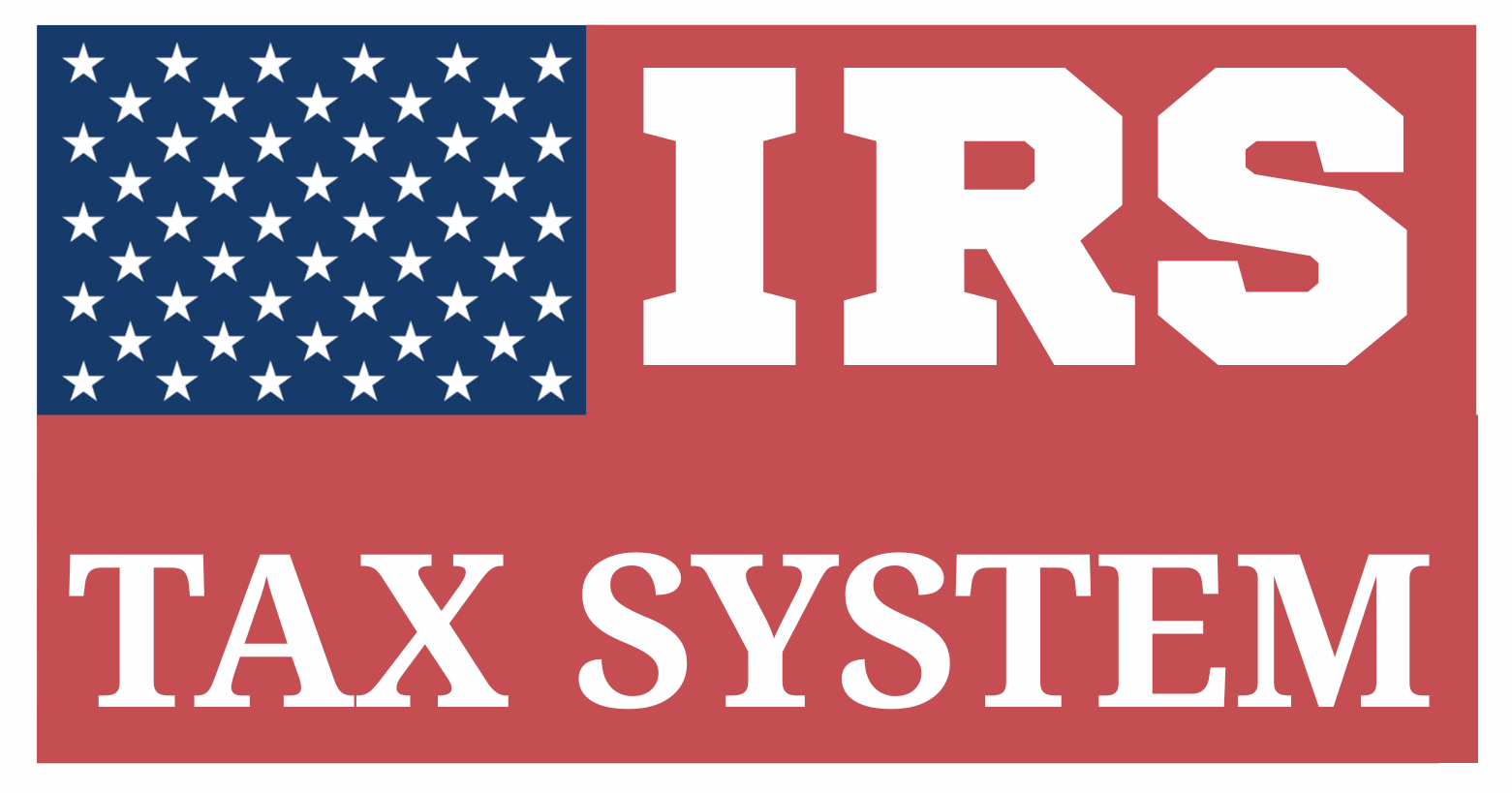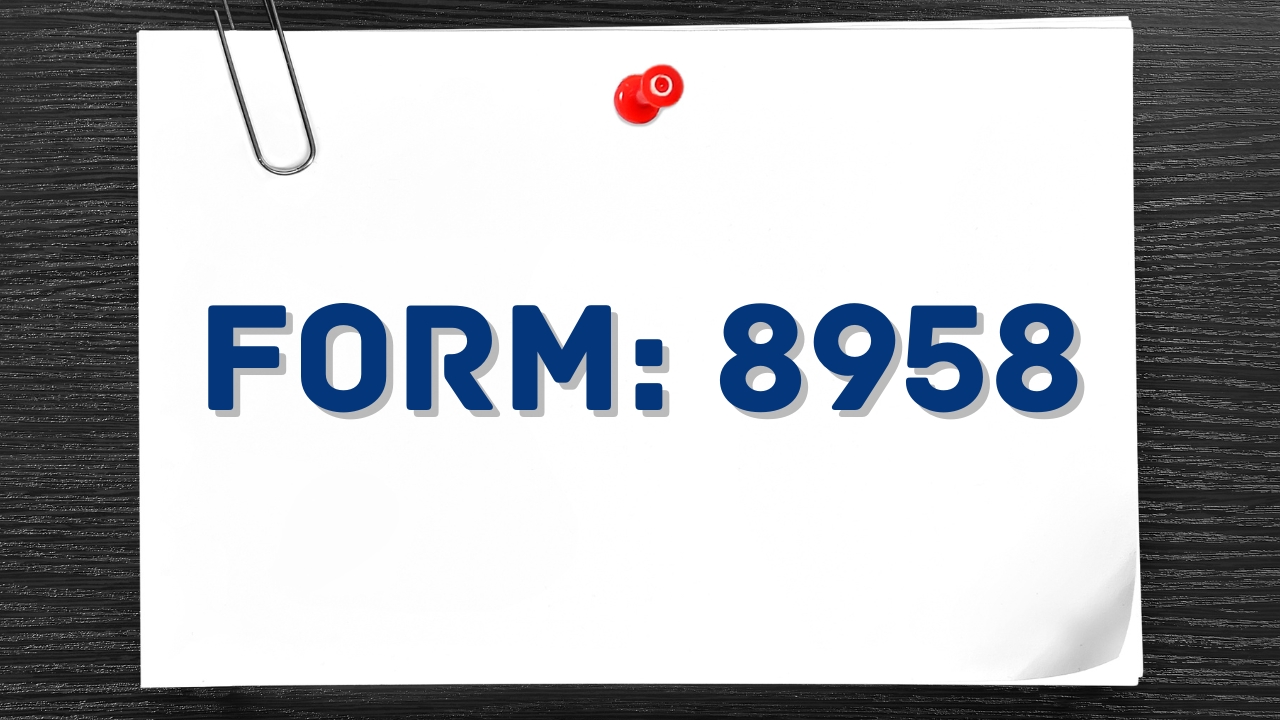Form 8958: Best Review On Allocation of Property States
Table of Contents
Everything You Need To Know About Form 8958

IRS Form 8958, titled “Allocation of Tax Amounts Between Certain Individuals in Community Property States,” is a federal tax form used by individuals who live in community property states and are required to allocate income and deductions when filing separate tax returns. It ensures proper division of tax-related amounts (like wages, business income, and deductions) in accordance with state community property laws.
The form helps the IRS verify that each spouse or registered domestic partner (RDP) is reporting the correct share of income, deductions, and credits on their separate federal tax returns.
What Are Community Property States
Community property law applies in nine U.S. states, where income and property earned by either spouse during the marriage are generally considered jointly owned, regardless of who earned it or whose name is on the title. These states are:
- Arizona
- California
- Idaho
- Louisiana
- Nevada
- New Mexico
- Texas
- Washington
- Wisconsin
Some of these states also extend community property laws to registered domestic partners (RDPs)—not just married couples—such as in California, Nevada, and Washington.
Who Must File IRS Form 8958? — Detailed Explanation
IRS Form 8958 is not filed by every taxpayer—it is required only under specific circumstances tied to community property laws and separate tax filings. Here’s a detailed look at who must file this form:
You Must File Form 8958 If:
1. You live in a community property state
If you reside in any of the following nine U.S. states that follow community property laws:
- Arizona
- California
- Idaho
- Louisiana
- Nevada
- New Mexico
- Texas
- Washington
- Wisconsin
2. You are married, legally separated, or in a registered domestic partnership (RDP)
The form applies not only to married couples, but in certain states like California, Nevada, and Washington, it also applies to RDPs recognized under state law.
You are submitting your federal tax return using the Married Filing Separately status. If you are not filing jointly with your spouse or partner (i.e., you are filing as Married Filing Separately or separately as RDPs), you may be required to allocate income and deductions between the two individuals.
3. You are required to report community income
Community income is income that is considered jointly owned by both spouses or partners under state law, even if earned by only one individual. This includes:
- Wages and self-employment income
- Investment income
- Rental income
- Business income
- Certain retirement distributions
4. You or your spouse/partner had income, deductions, or tax payments that must be split
The form helps identify each individual’s rightful share of:
- Adjusted gross income
- Taxable income
- Deductions
- Tax payments (like federal withholding or estimated payments)
Special Situations Where You Must File
- You are separated but not divorced: If you lived apart for the entire year but remain legally married and file separately, you still must account for community income earned before the separation, depending on state law.
- One spouse or partner has no income: Even if one individual has no earned income, community property law may still allocate 50% of the other spouse’s income to them.
- You are subject to state-specific community property laws that override default federal treatment, such as treating separately titled property as community under certain conditions.
You Do Not Need to File Form 8958 If:
- You live in a common law property state (such as New York or Illinois).
- You are filing a joint tax return with your spouse or partner.
- You and your spouse/partner have no community income (e.g., all income qualifies as separate property and the state law supports that treatment).
- You did not reside in a community property state at any time during the tax year.
Why Filing Is Crucial
Failing to file Form 8958 when required can lead to:
- IRS mismatches in income reporting
- Misallocation of tax credits or deductions
- Delayed processing or audits
- Potential penalties for underreporting
It is especially important for tax professionals and self-filing taxpayers in community property states to carefully review state marital property laws and determine if income splitting is needed under IRS guidelines.
Form 8958 Structure — Full Breakdown
Form 8958 helps spouses or registered domestic partners fairly split their tax-related income and deductions based on the rules of their community property state.
Here’s what the form includes section-by-section:
1. Identification Information
This section collects basic information about:
- The taxpayer (person filing the form)
- The spouse or RDP with whom the taxpayer is splitting income/tax items
It includes full names and Social Security numbers (SSNs) or Individual Taxpayer Identification Numbers (ITINs) for both individuals.
2. Income Allocation
This section outlines how each type of income should be split between the individuals. Common categories include:
- Wages and salaries (Form W-2 income)
- Self-employment income (Schedule C or F)
- Interest and dividends
- Capital gains and losses
- Rental income
- Pensions and retirement plan distributions
- Social Security benefits
- Additional types of income that may include alimony received, state unemployment compensation, prizes, awards, and other miscellaneous taxable earnings
For each income type, you must enter:
- The total income amount
- The portion attributable to you
- The portion attributable to your spouse or partner
3. Deductions Allocation
This section is used to allocate deductions claimed on the tax return, such as:
- Educator expenses
- IRA contributions
- Student loan interest
- HSA deductions
- Self-employment tax and health insurance
- Alimony paid
Again, each item is divided into your share and your spouse’s/RDP’s share.
4. Payments and Credits
You’ll also need to allocate tax-related payments and credits, including:
- Federal income tax withheld
- Estimated tax payments
- Earned Income Credit (if applicable)
- Additional credits from other forms
This ensures that each individual claims only their share of payments and refundable credits.
5. Summary Totals
The final portion of the form includes a summary of:
- The complete breakdown of income, tax deductions, and payments assigned to each individual.
- A check to ensure the total amounts align with those reported on each person’s individual return
Form 8958 Example: Community Property Income Allocation
Scenario:
Jack and Maria Thompson are a married couple living in California, which is a community property state. For the 2024 tax year, they decide to file separately using the Married Filing Separately status. Even though they are filing separate returns, California’s community property laws require that all income earned during the marriage be equally divided between the spouses.
To comply with these rules, they must file IRS Form 8958 – Allocation of Tax Amounts Between Certain Individuals in Community Property States. This form helps the IRS understand how income, deductions, credits, and other tax items are being split between them.
Part I: Identification Information
At the beginning of Form 8958, both spouses list their names and Social Security Numbers. Jack is the spouse who includes the form with his separate return.
- Name of Person Filing Return: Jack Thompson
- SSN: 123-45-6789
- Name of Other Spouse: Maria Thompson
- SSN: 987-65-4321
Part II: Income Allocation
Suppose the following income amounts were generated during the 2024 tax year:
- Jack earned $80,000 in wages.
- Maria earned $50,000 in wages.
- Jack also earned $20,000 from self-employment.
- The couple received $2,000 in joint interest income and $1,000 in dividend income from a jointly owned brokerage account.
Income Breakdown and Allocation:
| Type of Income | Total Amount | Jack’s Share (50%) | Maria’s Share (50%) |
| Jack’s Wages | $80,000 | $40,000 | $40,000 |
| Maria’s Wages | $50,000 | $25,000 | $25,000 |
| Self-Employment Income | $20,000 | $10,000 | $10,000 |
| Interest Income (Joint) | $2,000 | $1,000 | $1,000 |
| Dividend Income (Joint) | $1,000 | $500 | $500 |
Note: In community property states, any income earned by one spouse is generally treated as equally owned by both spouses. Therefore, it is split 50/50 unless an exception applies.
Part III: Deductions Allocation
Jack contributed $6,000 to a traditional IRA during the year. Because this is a personal contribution, only Jack is eligible to claim this deduction. Other deductions (such as mortgage interest or charitable contributions) would also be split if jointly paid.
Deduction Allocation:
| Type of Deduction | Total Amount | Jack’s Share | Maria’s Share |
| Traditional IRA (Jack) | $6,000 | $6,000 | $0 |
Note: Personal deductions are not subject to community property rules and remain with the individual who paid or contributed.
Final Allocation Summary:
Based on the above information, the following allocations are made on Form 8958:
- Jack will report:
- $40,000 from his wages
- $25,000 from Maria’s wages
- $10,000 from self-employment
- $1,000 in interest income
- $500 in dividend income
- $6,000 IRA deduction (his contribution)
- Maria will report:
- $40,000 from Jack’s wages
- $25,000 from her wages
- $10,000 from self-employment
- $1,000 in interest income
- $500 in dividend income
- No deductions (since the IRA deduction was Jack’s)
Form 8958 ensures that both spouses’ returns reflect the correct income and deduction splits as required by community property law. If Jack didn’t include this allocation, the IRS might question discrepancies between his reported income and actual earnings.
Important Tax Considerations When Using Form 8958
Filing IRS Form 8958 involves more than just splitting numbers between spouses — it requires a strong understanding of community property laws and their impact on federal income tax. Below are some key tax considerations individuals should keep in mind when completing and filing this form:
1. Community Property State Rules Vary
Not all states follow community property laws. Individuals living in community property states must properly allocate income and deductions between spouses in accordance with state law when filing separate returns. Alaska has optional community property rules for spouses who sign a community property agreement.
Each state may interpret or apply community property laws differently. Taxpayers should refer to state-specific guidance or consult a tax advisor for accurate allocation methods.
2. Required for Married Filing Separately (MFS) in Community Property States
Form 8958 is required when a married couple residing in a community property state decides to file separate federal income tax returns. If spouses file a joint return, this form is not required, since income and deductions are already combined.
3. Report Community vs. Separate Property Accurately
Taxpayers must distinguish between:
- Community property income – typically includes wages earned by either spouse during the marriage, interest from jointly owned accounts, or rental income from jointly held properties.
- Separate property income – such as inheritances, gifts, or income from assets acquired before the marriage (unless commingled).
Accurate categorization prevents misreporting and possible penalties.
4. Allocation of Taxes and Credits
Form 8958 is not limited to income. It also requires an allocation of:
- Withholding and estimated tax payments
- Refundable and nonrefundable tax credits
- Adjustments and deductions
Each tax item should be split in accordance with ownership, who paid, and community property rules.
5. Avoiding Double Reporting or Omissions
Incorrectly allocating or failing to allocate income, deductions, or taxes can result in:
- Duplicate reporting of the same income by both spouses can result in double taxation.
- Underreporting income if neither spouse reports certain community income
This can trigger IRS audits, notices, or penalties.
6. Impact on IRS Matching and IRS Systems
When income reported on a spouse’s W-2 or 1099 is split and part of it appears on the other spouse’s return (due to community property allocation), the IRS may flag discrepancies unless properly explained on Form 8958. It serves as documentation to support such cross-reporting.
7. Treatment of Self-Employment Income
Self-employment income earned by one spouse is considered community property in most community property states. However, allocation of self-employment tax (SE tax) may remain with the earning spouse, which can affect eligibility for credits like the Earned Income Tax Credit (EITC) or Retirement Savings Contributions Credit.
8. Non-resident Aliens with U.S. Citizen Spouses
If one spouse is a nonresident alien and the couple does not elect to treat both as U.S. residents for tax purposes, different rules apply. The non-resident alien’s income may not be subject to community property allocation rules.
9. Effect on State Returns
While Form 8958 is filed with the federal return, the community property rules that affect it stem from state law. Some states also require separate state-level income allocations, which may not always mirror the federal return. Dual compliance is often necessary.
10. Retain Documentation
Taxpayers are advised to maintain comprehensive documentation to substantiate the allocations made on Form 8958, including records such as:
- Pay stubs and W-2s
- Account ownership documents
- Marital agreements
- Property title records
This documentation is crucial if the IRS questions your allocation decisions.
When and Where to File Form 8958?
When to File?
IRS Form 8958 must be filed at the same time as your federal income tax return (Form 1040 or 1040-SR) when:
- You are legally married and reside in a state that follows community property laws, and
- You and your spouse are filing separate returns (Married Filing Separately).
There is no separate due date for Form 8958 — it is submitted as an attachment to your tax return and must be filed by the standard tax deadline for individuals, which is typically:
April 15 of the year following the tax year (e.g., for tax year 2024, the due date is April 15, 2025).
If you request an extension (using Form 4868, for instance), Form 8958 should be filed along with the extended return, by the new extended deadline (usually October 15).
Where to File?
Form 8958 is not filed separately. It is attached to your Form 1040 or 1040-SR return and submitted to the IRS by:
- E-filing: If you are submitting your tax return electronically, simply include Form 8958 as part of the return package.
- Mailing a paper return: Include Form 8958 with your physical 1040 or 1040-SR, and mail it to the appropriate IRS address listed for your state of residence, which can be found in the IRS instructions for Form 1040 or on irs.gov.
Penalties for Non-Compliance
While Form 8958 itself does not carry a direct penalty, failing to file it when required — or filing it inaccurately — can lead to significant consequences due to misreporting of income or deductions. These may include:
1. Underreporting or Double Reporting Income
- If community income is not properly split, the IRS may identify inconsistencies and issue a notice or audit.
- This can lead to adjusted tax liabilities and penalties for underpayment.
2. Neglecting to Report Shared Deductions or Taxes
- Incorrect allocation of withholding, credits, or deductions may result in an incorrect tax return and denial of credits.
3. Accuracy-Related Penalties
If the IRS determines that a substantial understatement of income occurred due to failure to follow community property allocation rules, you may be subject to:
- A 20% penalty may apply to the portion of unpaid taxes resulting from the mistake.
4. Interest on Unpaid Taxes
Besides penalties, any tax underpaid due to incorrect income allocation will accrue interest starting from the original filing deadline until the full amount is settled.
Frequently Asked Questions (FAQs)
Can I file jointly and still use Form 8958?
No, Form 8958 is used exclusively by taxpayers who file separately and reside in community property states.
How is business income treated?
Business income from a sole proprietorship is typically community income if earned during the marriage in a community property state.
What if I lived in multiple states during the year?
You must allocate income and deductions only for the period you were subject to community property laws, and report other periods under regular rules.
Are student loans considered community debt?
It depends on state law. Generally, the payments made during the marriage might be treated as community expenses, but the debt itself may be separate.







